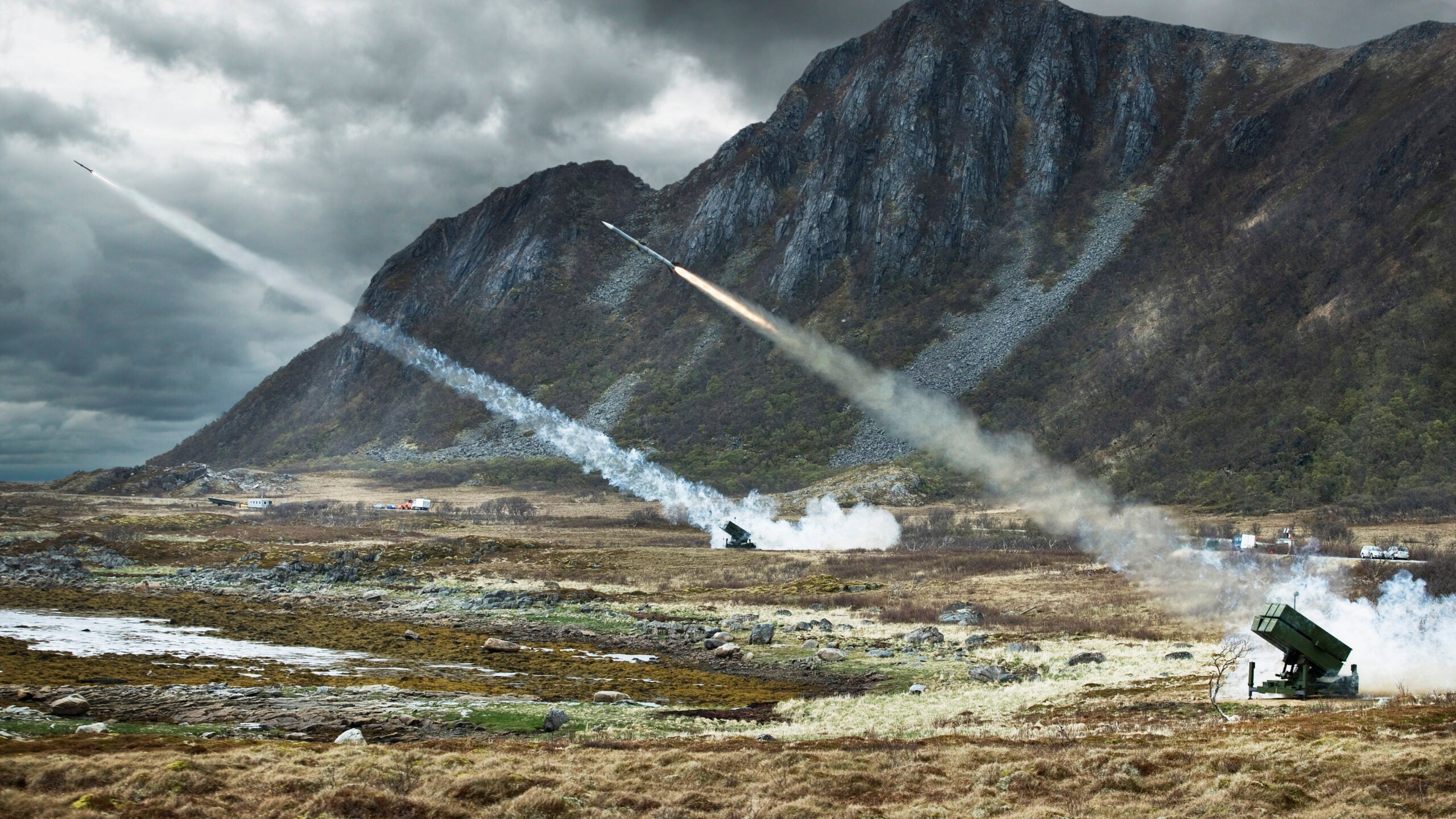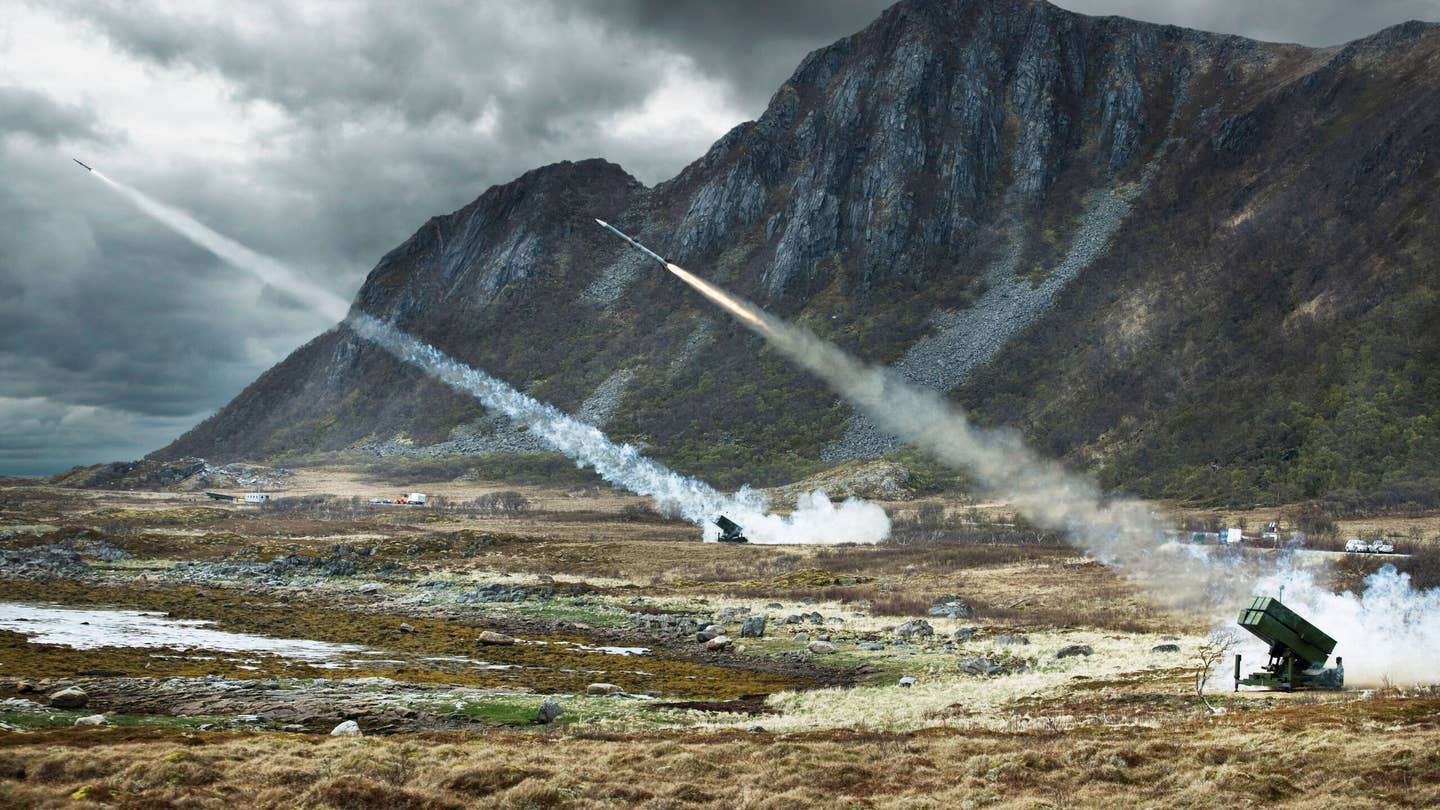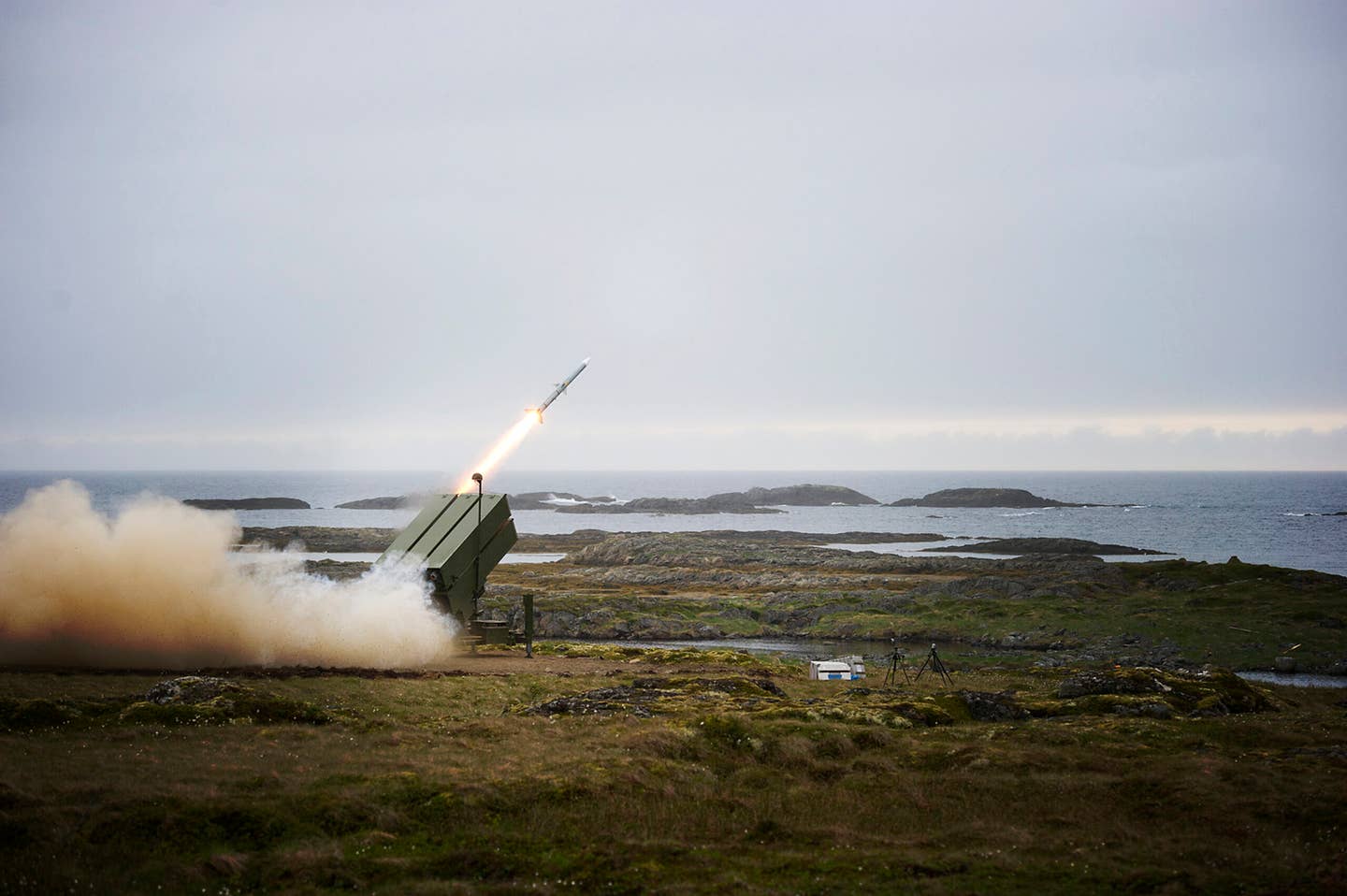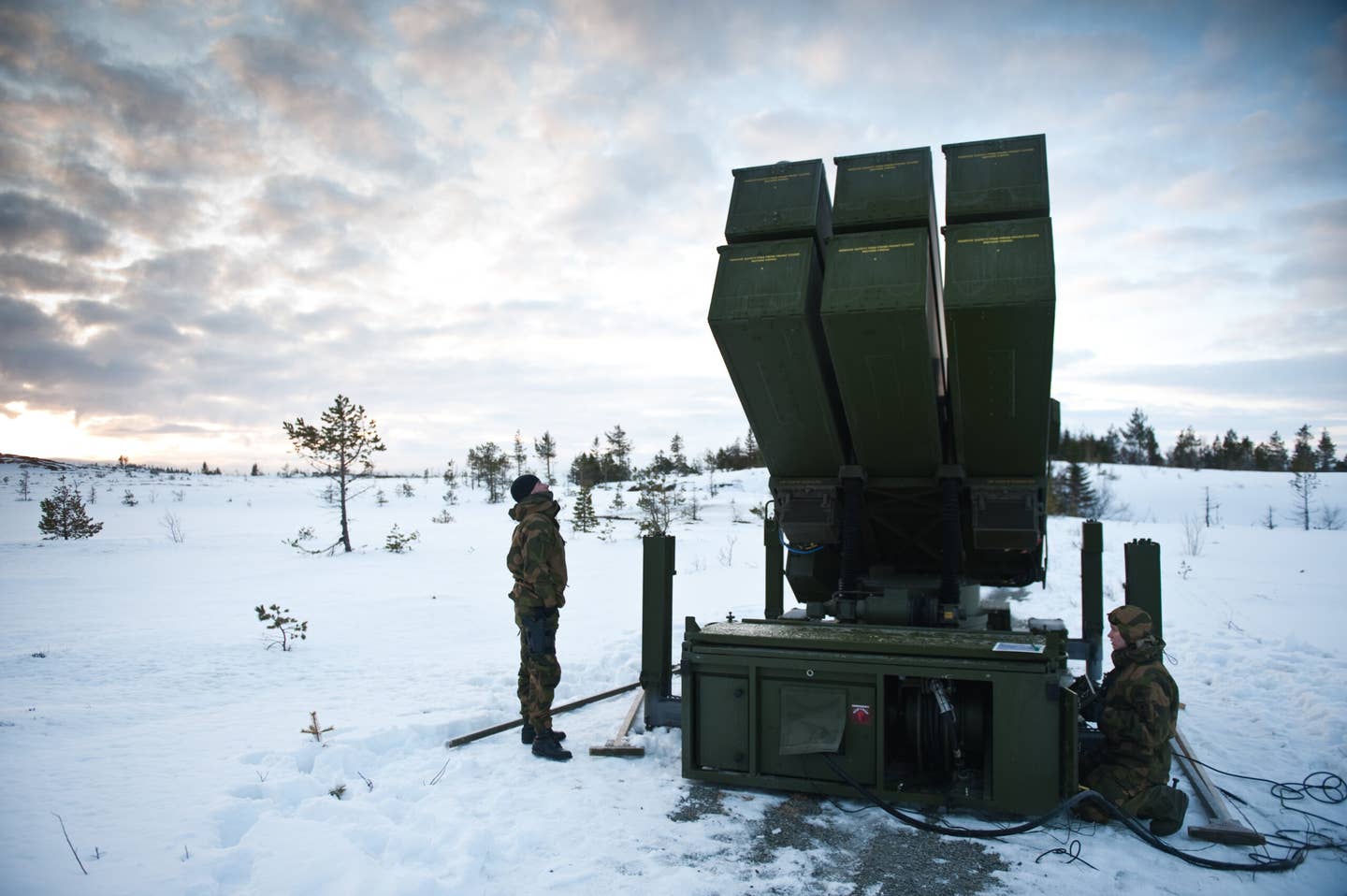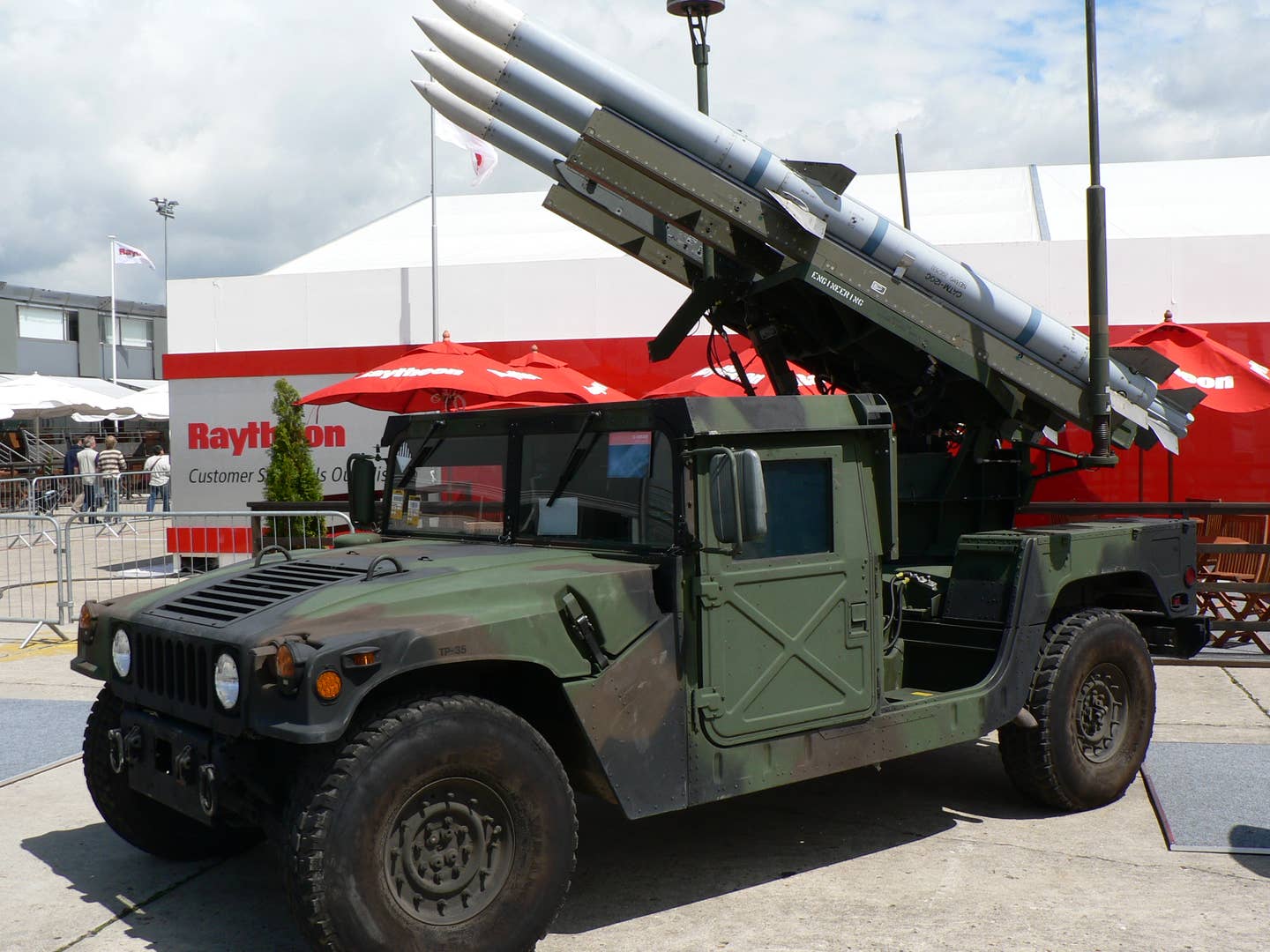Ukraine To Get Same Surface-To-Air Missiles That Protect U.S. Capital: Report
Ukraine looks set for a much-needed upgrade to its hard-pressed Soviet-era ground-based air defense systems in the form of NASAMS.
by
Thomas NewdickJun 27, 2022 1:47 PM
Kongsberg
Share
Thomas Newdick
View thomas newdick's Articles
CombatAir
Ukraine’s repeated requests for more capable ground-based air defense systems look likely to be fulfilled, with reports that the United States is close to announcing it will supply the National Advanced Surface-to-Air Missile System,
or NASAMS. This system is one that Kyiv has considered introducing itself in the past and Ukrainian Air Force pilots
have also highlighted it as the best solution to overhaul the country’s surface-to-air missile inventory.
According to a
report from CNN, citing an anonymous source, a U.S. announcement regarding the purchase of NASAMS systems for Ukraine is likely to come this week. It is expected to be part of the latest package of arms and other support for Kyiv, together with additional artillery ammunition and counter-battery radars.
A timeline for the delivery of NASAMS has not yet been revealed but the Ukrainian Armed Forces will need to spend time training on these unfamiliar systems. The number of systems and their value is also unknown at this stage, although the wording of the CNN report makes it sound like a single battery to start.
Test launch of NASAMS, here seen firing an AIM-120 AMRAAM missile.
Kongsberg
Speaking to reporters today, National Security Advisor Jake Sullivan
provided few details but did confirm that Ukraine was in line to get new air defense systems:
“I’ve seen the reports of specific details around advanced air defense capabilities that the United States is preparing to provide to the Ukrainians. I can confirm that we are, in fact, in the process of finalizing a package that includes advanced air defense capabilities. I won’t get into the details of the system. I’ll wait until the contract actually gets done. But this week, as the President told his fellow G7 leaders — and as he told President Zelenskyy — we do intend to finalize a package that includes advanced medium- and long-range air defense capabilities for the Ukrainians, along with some other items that are of urgent need.”
Previously, Ukrainian President Volodymyr Zelensky had called upon Norway to provide NASAMS, a system that was developed by Raytheon in cooperation with Norway’s Kongsberg Defense. While Norway has provided Ukraine with heavy weaponry since the war began, including self-propelled artillery, it’s not transferred any examples of NASAMS.
The expected next U.S. security package for Ukraine will follow another $450 million of military aid announced last week. That package,
which you can read more about here, included four more M142 High Mobility Artillery Rocket Systems, or HIMARS, 18 patrol boats, and 36,000 rounds of 105mm howitzer ammunition, as well as tactical vehicles, small arms, and more.
While NASAMS doesn’t offer the kind of range provided by higher-tier SAM systems, such as the S-300 series
now in Ukrainian use, it represents a significant advance over the
man-portable weapons that have constituted the bulk of the ground-based air defense systems provided to Kyiv since the war began. It's also far more modern than Ukraine's Soviet-era short and medium-range air defense systems. What’s more, at least two dozen Ukrainian S-300 launchers
are confirmed as having been destroyed since the conflict began and there are few options for sourcing replacements for these Russian-made systems.
As for the mention of “long-range air defense capabilities for the Ukrainians” in Sullivan’s statement, that remains a mystery. It may even refer to the future delivery of
Patriot SAM systems, which would provide a highly capable upper-tier complement to the NASAMS, as well as bring a significant anti-ballistic missile capability. At this stage, however, there is no official word on other potential systems that might be headed to Ukraine and this could have been just how he described NASAMS.
In terms of NASAMS performance, the closest counterpart in Ukrainian service is likely the Cold War-era
Buk (SA-11 Gadfly), a highly mobile tracked system that has reportedly been particularly successful but which has also suffered its fair share of attrition. The Buk has a maximum engagement range of 22 miles but shares the same problem as the S-300, in that only limited numbers (if any) are able to be transferred to Ukraine from NATO or other friendly nations.
The relatively limited maximum range of around 20 miles for NASAMS means it’s best suited to defend key infrastructure and population centers, a role that it fulfills in the United States, where it’s deployed permanently to various locales to
protect Washington DC. Indeed, once Ukraine gets its hands on NASAMS it would not be surprising if it’s deployed to defend Kyiv, which, just last weekend,
came under missile attack, for the first time in three weeks.
Indeed, NASAMS is also intended to engage low-flying cruise missiles, of the kinds that have been
used extensively by Russia in the conflict so far. Targets can reportedly be engaged by NASAMS altitudes between 1,000 feet or even less and upwards of 50,000 feet. This capability would provide a major advantage over manned fighter jets which have also been used to intercept cruise missiles, with mixed results.
Ukrainian Air Force MiG-29 pilot “Juice” told us that the low radar cross-section of cruise missiles, especially when combined with their low-altitude flight path, and electronic warfare jamming by third-party sources, can make it impossible to detect them using the fighter’s dated radar, or visually. “I think ground air defenses are much more capable against them,” Juice admitted, “they have a lot of kills of cruise missiles every day.”
A bolstered ability to counter Russian missile strikes is something that President Zelenskyy called for during his meeting today with G7 leaders. “His first request in the presentation he made was for further air defense systems,” National Security Advisor Jake Sullivan
confirmed. “In particular, at the top of his mind was the set of missile strikes that took place in Kyiv and other cities across Ukraine, and his desire to get additional air defense capabilities that could shoot down Russian missiles out in sky. So, the President was able to be positively responsive to him on that.”
One other advantage of NASAMS is that it’s used in conjunction with the
AN/MPQ-64 Sentinel radar, a type that Ukraine already uses.
Furthermore, via the Norwegian-designed Fire Distribution Center (FDC), NASAMS can be deployed in a distributed configuration, with radars and missile batteries connected via a NATO-standard datalink. With a full complement of nine launchers, 54 missiles are ready to fire, although the FDC can actually manage the simultaneous engagement of 72. Should one or more nodes within this network be destroyed, or otherwise go offline, the remainder will still work, providing a significant degree of redundancy. This should give it a far better chance of surviving the kinds of
suppression of enemy air defenses (SEADS) missions that the Russian Aerospace Forces are increasingly flying, primarily employing the Kh-31P series (AS-17 Krypton) anti-radiation missile.
A live-fire test of the AMRAAM-ER variant for NASAMS at Andoya Space Defense Center, Norway, in April 2021:
As well as its radars, a NASAMS battery normally also includes at least one vehicle with an electro-optical/infrared sensor. This adds another layer of survivability, allowing targets to be engaged passively, without telltale radar emissions that could allow the enemy to target the NASAMS in turn under some conditions. This sensor is primarily used for positively identifying enemy targets though, as well as kill assessments following an engagement.
The exact version of NASAMS to be provided is unknown, but both NASAMS 2 and 3 are currently in service, with the latter being in production. While NASAMS 2 uses a surface-launched adaptation of the successful AIM-120 Advanced Medium-Range Air-to-Air Missile (AMRAAM), NASAMS 3 employs the improved
AMRAAM-ER (for Extended Range) missile. This latter adds the motor from another Raytheon product, the RIM-162 Evolved Sea Sparrow Missile (
ESSM), to the
AIM-120C-7 warhead and seeker. Having AMRAAM as one of its missile options means that, potentially, countries from across NATO and elsewhere could provide air-launched AIM-120s to Ukraine from their own stocks, especially the older AIM-120A/B models. Additionally, NASAMS 3 can be armed with the shorter-range
AIM-9X Sidewinder missile, with infrared guidance, intended primarily to defeat cruise missiles.
NASAMS 3 also comes with the option of integrating the pan-European
IRIS-T SL missile. In this form, the system is
on order for Norway, as the Mobile Ground Based Air Defence System, with systems mounted on M113 armored personnel carrier chassis. It is conceivable that the Ukrainian systems may draw upon this technology, with Germany already committed to supplying
IRIS-T SL batteries, although these won’t be available until the end of the year, at the earliest. Nevertheless, having IRIS-T missiles integrated with NASAMS would have the advantage of commonality with the German-supplied systems.
The earlier NASAMS 1, however, might also turn out to be an attractive option, providing there are stocks of these weapons readily available. The first-generation NASAMS is apparently now out of service and the status of the former Norwegian systems is unclear. If they could be secured, however, they could offer the advantages of being less complex than their successors and also less sensitive in terms of export status.
The launcher unit from a Norwegian NASAMS battery during an exercise in 2010.
Soldatnytt/Wikimedia Commons
Another option would be for Ukraine to receive a mobile version of NASAMS, either like the M113-based option selected by Norway, or perhaps a wheeled variant, like that which has been offered on the rear of a Humvee multipurpose utility vehicle, which is
also in Ukrainian service. Combined with AMRAAMs, this would provide a configuration very similar to the SLAMRAAM system that was originally developed for the U.S. Army.
A Humvee equipped with surface-launched AMRAAMs, as offered in the past by Raytheon.
Wikimedia Commons
Overall, it’s clear that the Russian military continues to make extensive use of airpower over Ukraine. U.S. officials have not provided as many recent updates on their assessments of Russian air activity, but even after a significant reduction after the fall of
Mariupol, the figure was 140 sorties in a 24-hour period in mid-May. Prior to taking that city, around 250-300 were being flown in each day. In contrast, as of this month, Ukrainian pilots said they were flying only 20 to 30 sorties per day.
The much smaller Ukrainian Air Force is now focused primarily on ground-attack sorties in support of troops engaged in eastern Ukraine, where Russia has been
making significant advances. With more aircraft involved in offensive activities, the need for ground-based air defense systems becomes even greater, both to defend key objectives as well as close down airspace to the Russians, where possible. Furthermore, if NASAMS is supplied with AIM-120 AMRAAM missiles, which it is highly likely to be, that would potentially establish a footprint for the weapon in Ukraine that could help pave the way to providing the same missile to arm Ukrainian Air Force fighter jets.
There
have been constant calls for Ukraine to replace its Soviet-era fighter jets with Western models, and delivery of AMRAAMs in advance of such a move would likely ensure Kyiv was also able to secure aircraft with AMRAAM capability. Notably, some non-NATO F-16 export customers
have not been permitted to acquire AMRAAMs, for instance. Ukrainian fighter pilots
have listed an active radar missile like AMRAAM as one of their top needs for successfully facing off against superior Russian fighters.
Among all the different arms supplied to Ukraine in recent months, NASAMS does stand out. Most previous SAMs delivered have either been low-level systems, including
shoulder-launched missiles, or similar infrared-guided missiles in
vehicle-mounted form. Only one long-range S-300PMU battery
has been supplied.
Talking to
The War Zone back in March about his hopes of receiving NASAMS, Ukrainian MiG-29 pilot Juice said: “We understand it’s fucking expensive. It’s like science fiction for us at the moment, but we need to start the decision-making process because it’s also our priority.”
Now, at last, it looks like as if 'science fiction' may soon become reality.
Contact the author: [email protected]

 www.armyrecognition.com
www.armyrecognition.com






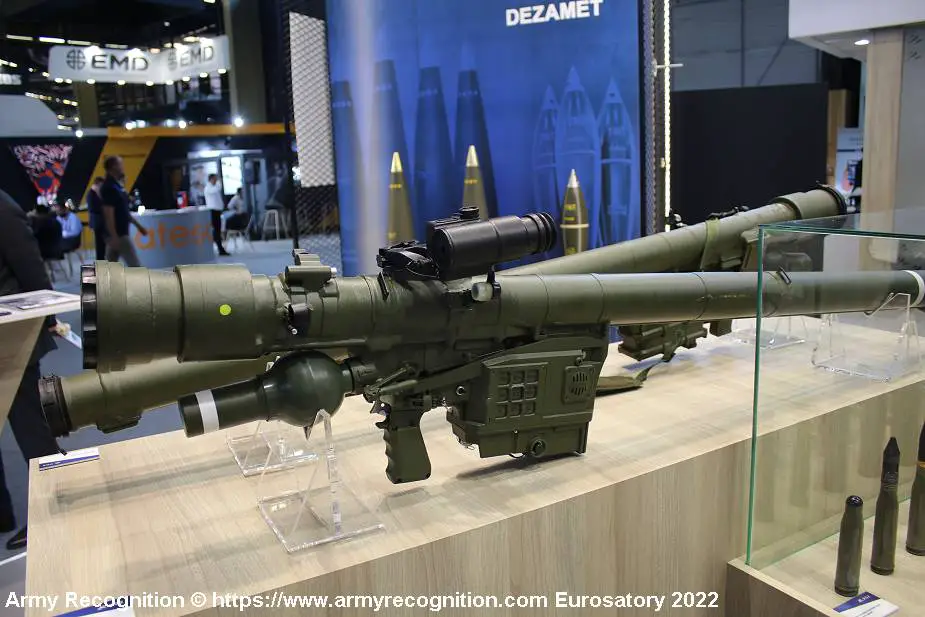

 Kun vielä saataisiin NSM:t Gabrielin rinnalle...
Kun vielä saataisiin NSM:t Gabrielin rinnalle... 


